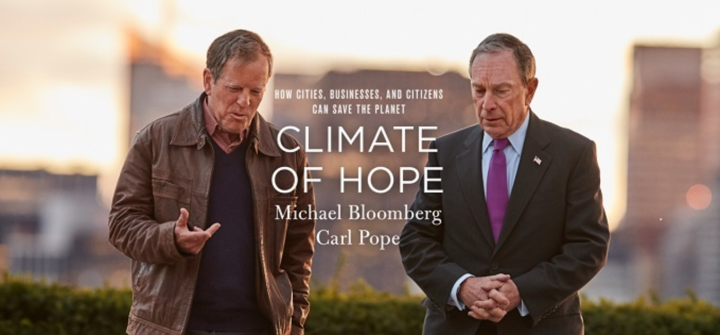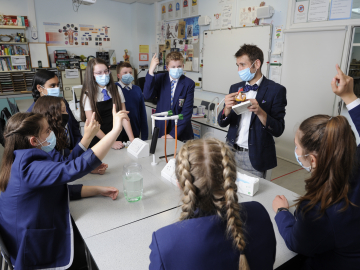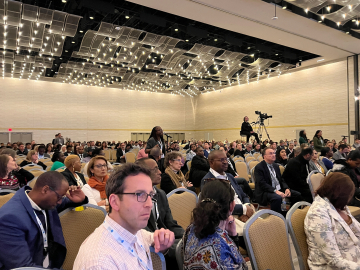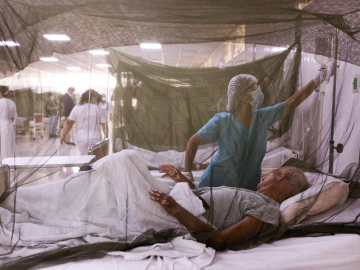Climate of Hope: An Optimistic Conversation About Climate Change
In their newly released book, CLIMATE OF HOPE, Michael Bloomberg and former head of the Sierra Club Carl Pope train their focus on the practical steps that cities, business, and citizens can do to save the planet from climate change—with or without help from national governments.
In the following excerpt for Global Health NOW, Bloomberg explains his perspective. While the numbers are grim—consider, for example, that 7 million die each year from air pollution and the long-term consequences to human health could be cataclysmic—he highlights other ways to talk about and address the problem.
“As we’ve seen over the last two decades, it’s counterproductive to focus on end-of-the-world scenarios. The reality is: warning of some far-off possible harm doesn’t spur politicians to act, as they are motivated by short-term interests,” writes Bloomberg, benefactor of the Johns Hopkins Bloomberg School of Public Health, which publishes GHN.
I’ve had a passion for science for as long as I can remember. As a kid, I would travel on Saturdays from my house in Medford to the Boston Museum of Science, which sits on the Charles River near Boston Harbor. All of us remember the first teacher to have a profound impact on our lives. For me, that teacher was the Museum of Science.
My visits to the museum taught me to ask questions and sparked a lifelong interest in understanding how things work. That led me in high school to take a summer job at a small electronics company, where my supervisor encouraged me to apply to Johns Hopkins University. At Hopkins, I originally intended to get a degree in physics. There was, however, a German-language requirement, because many of the physicists whose work formed the basis of the curriculum were Germans. After three days in German class, I switched to electrical engineering. Although I ended up pursuing a career in business instead, I never lost my love of science and interest in figuring out how things work. And I have the Boston Museum of Science to thank for that.
In 2016, I returned to the museum to announce a gift in honor of my parents, Charlotte and William Bloomberg. I couldn’t think of a more fitting way to honor my most influential teachers—my parents and the museum—than by linking them together and expanding the museum’s educational work, so that more kids could have the same opportunities there that I had. Naturally, climate change will be one of the topics they learn about.
Climate change threatens life on the planet like nothing else. If, God forbid, we should ever have a nuclear war, most natural life on our planet would survive. Climate change, on the other hand, could do irreversible harm to the natural resources humanity depends on. If we do nothing, the long-term consequences to our planet could be cataclysmic. But as we’ve seen over the last two decades, it’s counterproductive to focus on end-of-the-world scenarios. The reality is: warning of some far-off possible harm doesn’t spur politicians to act, as they are motivated by short-term interests.
Journalists like to focus on these far-off dangers, too, because disaster makes for good copy. Economists also like to talk about the long-term costs of climate change, because the numbers are so extraordinary. Because of the uncertainty Carl described in the last chapter, efforts to calculate the total climate change bill are by definition speculative. But we know more than enough to be concerned. British Academy President Lord Nicholas Stern’s 2006 Review on the Economics of Climate Change estimated that unchecked climate change would cost the world 5–20 percent of global GDP, but that the cost of confronting the problem would run about 1 percent. In the Risky Business Project, an initiative I have worked on with former Treasury Secretary Hank Paulson and former hedge fund executive Tom Steyer, we produced a report called The Economic Risks of Climate Change. The report documented that the costs to the United States would be very significant: In the decades ahead, coastal storm dam- age could grow to $35 billion annually, agriculture could face yield losses of more than 10 percent, and increasing power demand caused by rising temperatures could cost ratepayers an additional $12 billion annually.
But when people emphasize the enormous challenges we’ll face if we do nothing for the next one hundred years, it can make the problem of climate change seem too big to manage, which is discouraging—and false. Placing too much focus on these long-term risks also hides the most compelling reason to fight climate change, which is not the danger we face in the future but the deadly reality we already face today.
According to the World Health Organization, seven million people die from air pollution each year. That’s about as many people as live in the cities of Houston, Chicago, Philadelphia, and San Francisco combined—all dying because of the air they breathe. That tragic toll makes air pollution one of the biggest risk factors for death globally, contributing to one in every eight premature deaths each year. And much of that pollution is caused by the same fossil fuels that are warming our planet—especially coal. Particulate matter from burning coal contributes to strokes, heart disease, lung disease, and cancer. If we could eliminate all the coal-fired power plants in China and India alone, we would save half a million lives every year. Of course, we can’t completely make that transition this year or next, or maybe even in the next decade. But every step we take in that direction saves lives. Not in the future—right now.
I’ve always believed that the primary responsibility of public officials is to protect people’s well-being. Every day that politicians spend distorting science to protect the interests of fossil fuel companies, people die. And unless we act, as populations increase, the death toll from fossil fuel pollution will continue rising.
Fighting climate change by speeding the transition to clean energy is one of the most important things we can do to improve public health around the world. This connection between public health and the planet’s health is what drew me to become involved in environmental issues. And it’s the most important reason why we must act without delay to fight the sources of both air pollution and carbon pollution.
From CLIMATE OF HOPE by Michael Bloomberg and Carl Pope. Copyright © 2017 by the authors and reprinted with permission of St. Martin's Press, LLC




